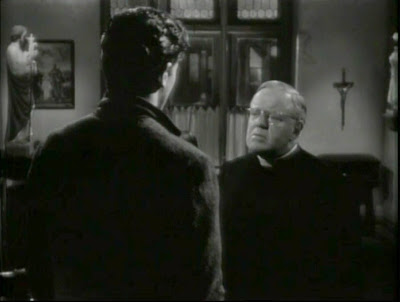 |
| Someone is Bleeding is alternately known as Les seins de glace, which translates into this movie’s other unfortunate/awesome English a.k.a., Icy Breasts. |
In fairness to Lautner, though the movies share some themes—a beautiful woman with a deadly secret; mind-fucking the protagonist—Someone is Bleeding (a.k.a. Les seins de glace, or Icy Breasts) is a different sort of thriller. Whereas Salina is what happens when an art film gets stoned and makes wild monkey love to a ’70s drive-in movie (or vice versa), Someone is Bleeding is all sideways glances and stony silences broken up with cryptic conversations and minimal bouts of violence. In short, Someone is Bleeding is kinda boring.
But boring isn’t the movie’s biggest problem; the character of François Rollin is. François (Claude Brasseur) is a hack TV writer working on his latest script when he decides to take a walk on the beach to clear his head. This is when he encounters beautiful blonde Peggy (Mireille Darc). François, undaunted by the fact that she’s out of his league and clearly not interested, makes it his mission to get his hands on her icy breasts by harassing his way into her heart, including getting into her parked car while she’s out shopping, then refusing to get out when she returns. Remarkably, Peggy is charmed by this. Me, less so.
Just because Peggy hasn’t filed a restraining order doesn’t mean she’s an easy catch, as François soon learns. Cockblocking him at every turn is Peggy’s overly protective attorney, Marc (a haggard looking Alain Delon), who not only has set up Peggy in a house staffed with a gruff—and kind of rapey—manservant, Albert (Michel Peyrelon), but also has his hulking chauffeur/henchman Steig (Emilio Messina) keeping tabs on her, violently intervening when necessary. Marc explains to François that Peggy is not stable, that she is a former drug addict and that she murdered her husband—a crime for which Marc defended her, getting her off with an insanity defense. She is so repelled by men that she kills them should one touch her. Of course, Marc is in love with her, too (never mind that he’s married, and y’know, the whole killing-any-man-who-touches-her thing), so his motives aren’t exactly pure. Yet, as the movie progresses, we begin to suspect that Peggy might be as unbalanced as Marc says she is.
Though Someone is Bleeding picks up steam as it goes along, it seldom heats up to a proper boil. Lautner’s script, adapted from a novel by Richard Matheson, has made Peggy so mysterious that she almost has no characterization beyond looking pretty and smiling nervously while François and Marc fight over her. Consequently, Darc, Delon’s girlfriend at the time, is a rather passive femme fatale. Nicoletta Machiavelli, who plays Marc’s steely wife, makes a stronger impression, making me wish her part had been bigger. Delon’s performance is solid but nothing special. As for Brasseur, besides being saddled with an irritating character, his buffoonish performance is tonally at odds with the film surrounding it. Not helping is his character’s brand of humor translates as assholery in any language. And since François is the lead (not Delon, as the poster would have you believe), you must endure his company for the entire movie, meaning that by extension you’re enduring Someone is Bleeding when you should be enjoying it.
















